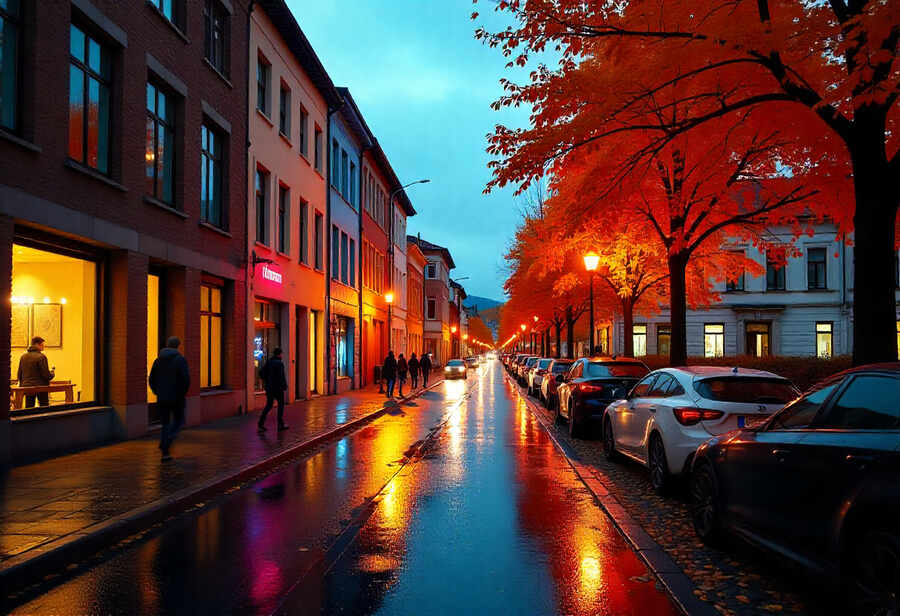Published on
August 23, 2025
Iceland’s Capital Region is proving that it is still a welcoming home for tourists. A fresh survey shows that 71% of residents feel positively about visitors. Just a year ago, the number stood at 66%, so the trend is upward. People are increasingly recognizing how travel pumps life into the local economy and adds to the culture of the area.
You can see why the survey scores are going up. Roughly 75% of respondents believe that the economic advantages are real and easy to spot. When tourists shop, dine, and explore, the money tends to land in small storefronts, create new jobs, and help pay for local services. These daily transactions remind residents that welcoming guests can keep the region financially healthy and spark more chances for new and better jobs.
Tourism activity is almost entirely centered in the Capital Region, so the impact is highly focused. A rich mix of cultural spots, restaurants, and nightlife gives both local and international visitors plenty of reasons to stop in. While that flood of visitors is great for business, it has come with new headaches, too. Residents sense longer wait times for the buses, more rental cars on residential streets, and housing that is slowly being set aside for vacation rental sites. Those challenges are growing louder, reminding the region that thoughtful planning is now as important as ever.
Even with the obstacles, most locals still welcome tourism. The plus sides go beyond dollars—they get to swap stories with people from different corners of the globe. Tourists often invite village folks to shine a light on the things they do best, from music to crafting to food. When a drum group plays at a pop-up festival, or hand-knitted sweaters share the same room with artists from around the world, the pride in the room is hard to miss. That spirit is loud enough to be heard even on the days when buses revive the old streets or when the markets get temporarily packed.
Countless guides, maps, and good sense tell the same story: manage the waves, ride the tide, and keep choppy water from splashing into family living rooms. The answer lies in planning. Boost the bus network, round up the cars at key attractions, and reroute pedestrian flows so the hotspots can breathe. Add educational signs that remind guests simple things, like tugging on a hitch in their jackets when a gorge steals their hats. The perks keep pouring into shops and community funds, but the recipe works only when the people writing the recipe stay one workshop ticket ahead of the crowds.
When word of mouth makes the Capital Region the world of a town and then the world chime enthusiastically, it tells another story, too: the globe respects the Iceland of the future. Neon-green moss that swings from black rocks, stories of ancient lagoons, and the simple fact that tracks to the skies aren’t packed with danger: these instantly knit a narrative admired from Beijing to Buenos Aires. That lasting demand is proof of something bigger: an economy ready to stand tall for decades and an invitation to map out the bus stop that should pop a financial cushion a decade ahead. The stronger the backbone of roads, centers, and parks, the louder the whisper that this is a welcome house for those curious to share the stories that will keep that sense of home alive.
Recent survey results show that locals in Iceland’s Capital Region are hopeful about tourism’s future role in their community. Though they recognize the strain that more visitors create—such as crowded spaces and stretched resources—the economic boost, cultural exchange, and social connections tourism brings are seen as worthwhile. The majority expressed belief that smart planning and focus on sustainability can keep tourism an overall benefit.
The Capital Region proves that tourism can help a community flourish if the pace of growth is carefully guided. By tackling the challenges of rising visitor numbers while protecting the advantages tourism offers, the area can nurture both economic strength and cultural life. Community backing for the industry is strong, and the survey reveals a shared promise to keep the Capital Region lively, friendly, and able to support its residents for years to come.
Tags: Iceland, Tourism news
